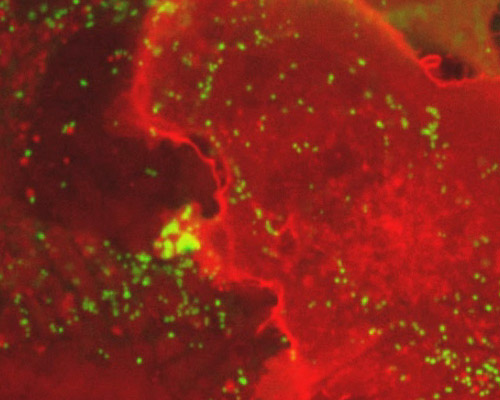Monkey Kidney Cells with mEmerald-PMP and mCherry-CAAX

Peroxisomes are atypically diverse organelles. They may contain a wide variety of enzymes and their contents can differ even in cells belonging to the same organism. Peroxisomes are also extremely adaptable. Their size, contents, and primary function can readily change depending on environmental conditions.
Research indicates that about one in every 20,000 people has a type of a peroxisomal disorder. The disorder that holds the most gravity out of the three is Zellweger syndrome, which is characterized by an absence or reduced number of peroxisomes in the cells. Present in patients at birth, Zellweger syndrome has no cure or effective treatment and usually causes death within the first year of life.
Peroxisomes in the cultured African green monkey kidney fibroblast cells (CV-1 line) featured in the selected digital video sequence were fluorescently tagged with mEmerald fused to a peroxisomal membrane protein targeting signal. mEmerald is a green fluorescent protein that was developed from EGFP. The featured cells were additionally labeled with mCherry fused to farnesyl. One of the mFruit series of fluorescent protein, mCherry was produced through the directed evolution of mRFP1.



